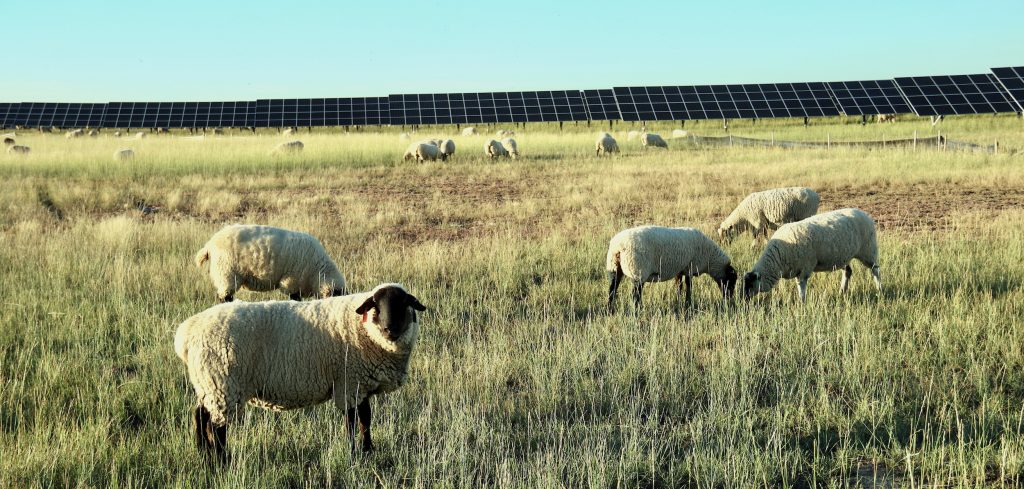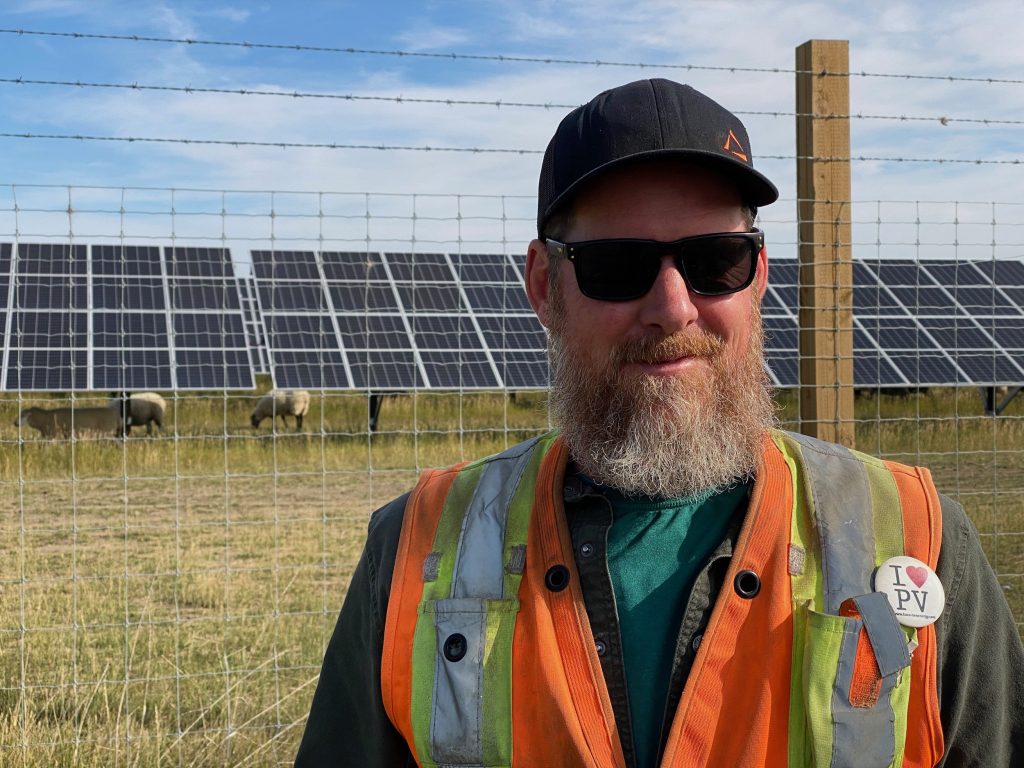By David Dodge, GreenEnergyFutures.ca
The Claresholm Solar Project is the largest solar project in Canada. At 132 megawatts, this solar farm has 477,198 solar modules and produces enough electricity to power 33,000 homes in Alberta.
As I drove down the road about 10 kilometres from Claresholm there it was – a sprawling sea of solar modules as far as the eye can see.
But what happened to the 1,280 acres of farmland that this solar farm occupies?
As I pulled up to the side of the road 13 km east of Claresholm I met Glen Walter, a member of the Granum Hutterite Colony. He smiled and continued to pump water into troughs on the other side of the fence inside the solar farm.
Walter was providing water for the 1,200 sheep grazing in this section of the solar farm.
This was the summer of the heat dome over the prairies. Temperatures reached near 40 Celsius. The grazing crops were poor and many area ranchers were short of feed.
Thanks to a creative arrangement between the Granum Colony (the landowners) and Capstone Infrastructure (the solar farm owner) the Colony had plenty of feed for their sheep this summer.
Walter told us the story, but couldn’t do an on-camera interview without permission.
Driving around to the Granum Substation where the solar electricity is fed into the grid I met Gregory Lamming, an outgoing guy who does quality assurance for Capstone.

Solar and sheep symbiosis
“Sometimes when solar farms are built, you’re taking the land away from previous uses,” says Lamming. “This land here was used for grazing in the past. And since we brought the sheep back, it’s being used for grazing again.”
In fact, most of the lands leased for the solar farm were grazing lands before the solar farm was built, and now with Canada’s largest solar farm in full operation, it is once again grazing land as it was before.
“The farmers and the corporation actually benefit from the sheep. The sheep control the weeds, and they control the grass,” says Lamming.
Without the sheep, the solar farm owners would have to cut the grass and weeds or worse yet apply herbicides to control them and keep them from interfering with the solar farm operation.
The solar farm is fenced into 300 – 400 acre parcels and the sheep are rotated through the parcels on a regular basis.
“We have about 1,200 head here now, and it takes about a month to clear 300 or 400 acres. It’s incredible how fast they, they chew it all up,” says Lamming.

Grazing with benefits
The solar farm is also providing a few unanticipated benefits to the grazing lands.
“They [the sheep] love to hide underneath the panels when it gets hot around here,” says Lamming. “They like to hide and cuddle around the posts and take it easy on the hot days.”
We also noticed when it gets really hot, as it did this summer the grass seemed to grow better under the shade of the solar modules as well.
The sheep seem perfectly adapted to solar farm-like. They don’t even have to duck as they saunter underneath the solar modules in search of shade.
Sheep and Solar Gallery
So do the sheep cause any problems?
Lamming smiled and said, “They poop just like any other herbivore.” And this says Lamming is bringing the soil back to an even better quality than it was.
“I love hanging out with the sheep. They’re calm. It really makes me feel like I’m in a natural setting when I’m at work – it’s not what you would expect for a power plant.”
For the landowners, grazing continues as it was before the solar farm. The difference is the Granum Colony provided millions of dollars worth of products and services to the solar project when it was under construction and now collects lease payments for the duration of the lease.
As for Lamming, he landed in the renewable energy industry about eight years ago.
“I got into renewables in 2013 in Ontario when they were running the feed-in tariff program. I built several farms throughout Ontario ranging from 35 megawatts to 100 megawatts.”
The work dried up in Ontario when the provincial government switched gears so he followed the work to Alberta where there’s a solar boom going on.
Things are pretty good these days for a quality assurance guy at a solar farm that is now completed. “It is a very laid back moment for the farm right now,” says Lamming. Once things are running smoothly he’ll be sent off to another solar farm under construction.

